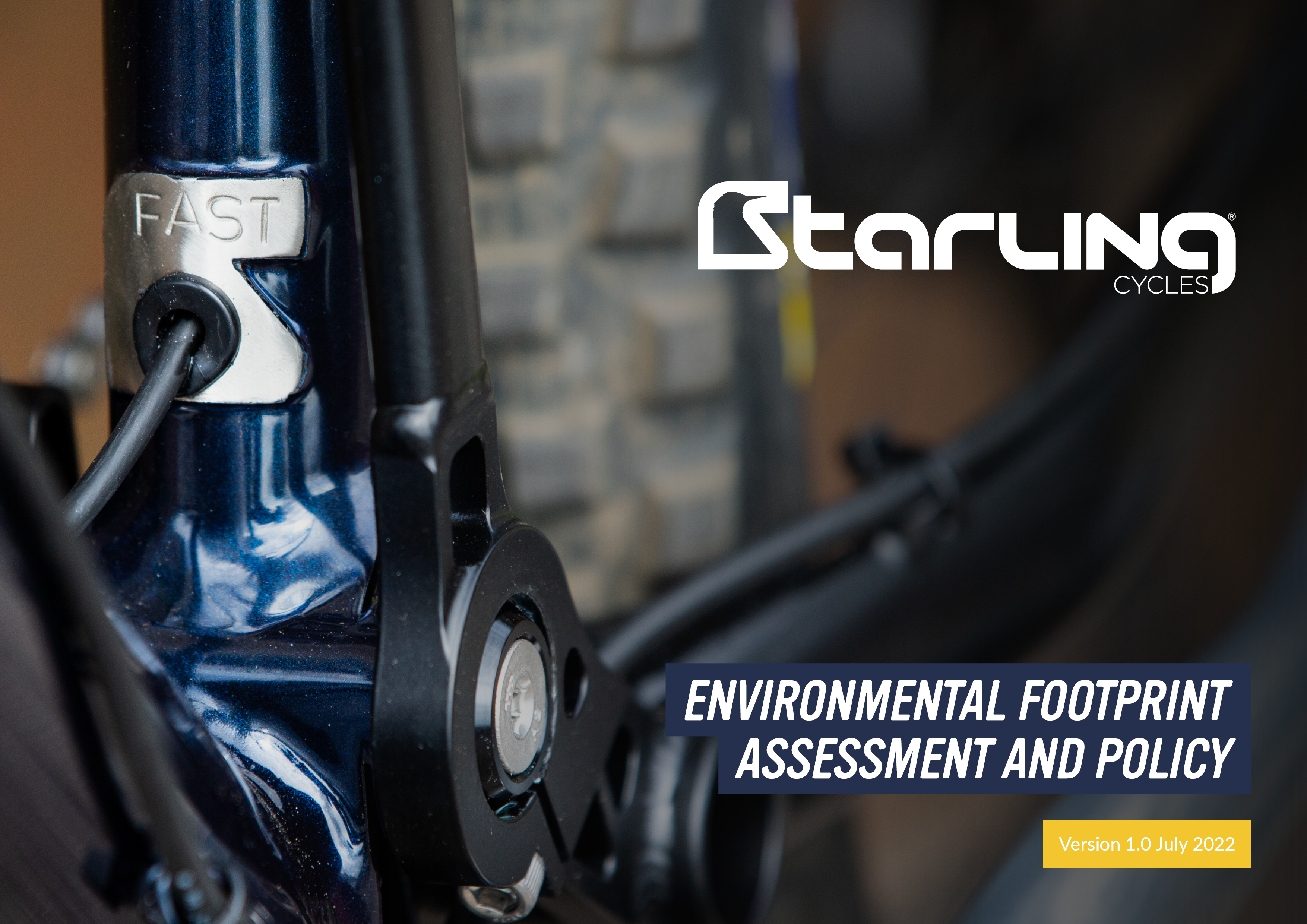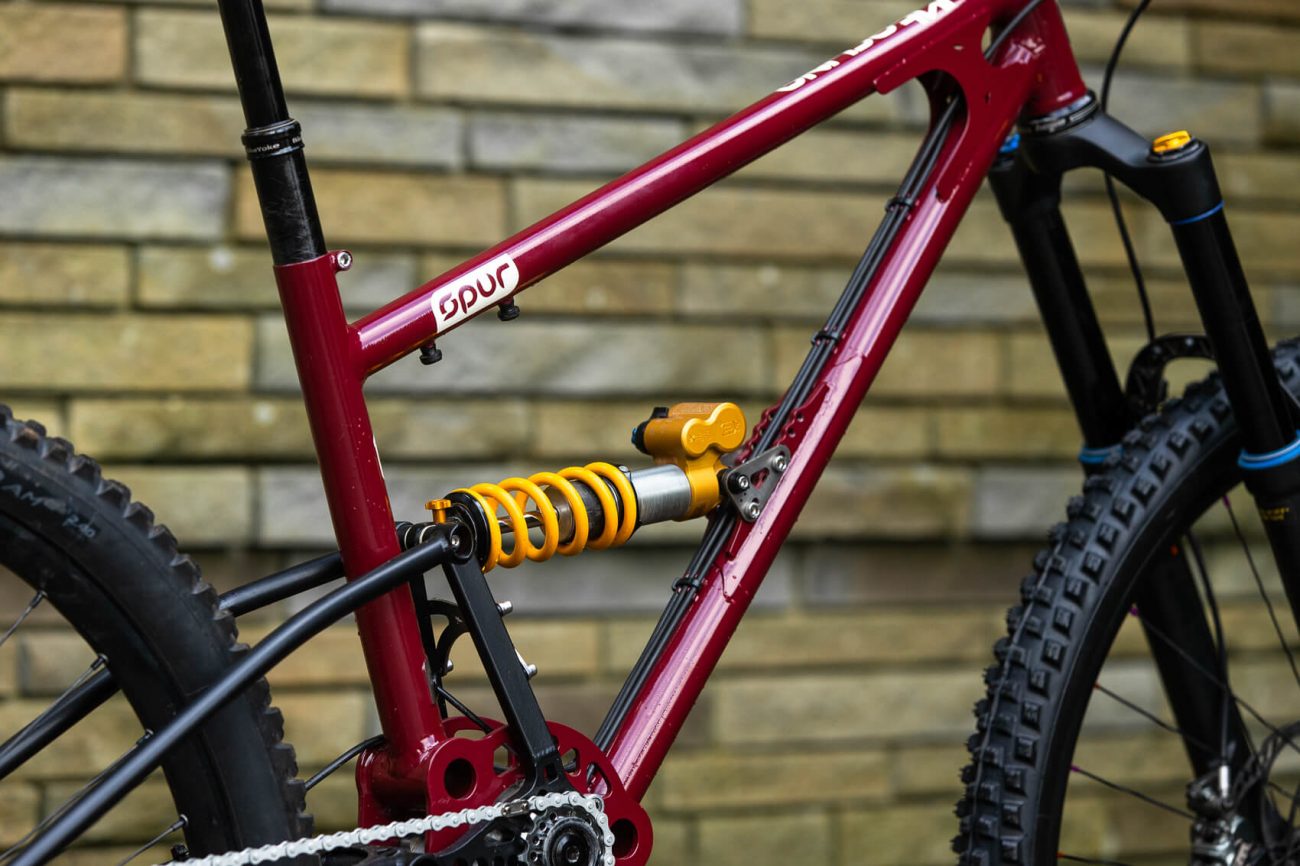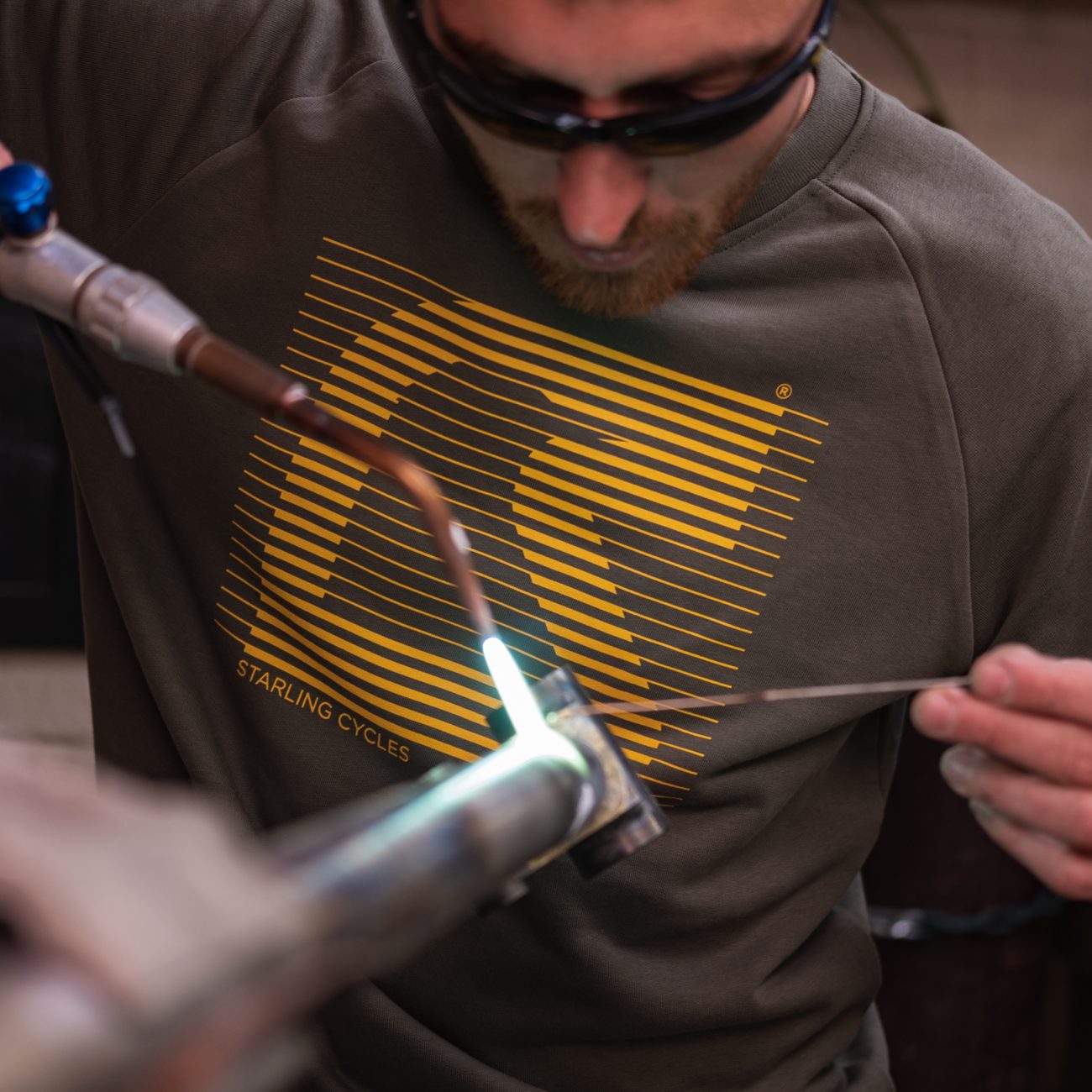A report from Starling is the result of a deep dive into how it runs as a business and how it can operate more sustainably.
It’s worth reading the full report (link to PDF) as it does detail that aspects that shipping things by air freight is possibly the main thing to avoid, regardless of what the item is made from.
Press Release:
Starling Cycles Published Environmental Footprint and Assessment Policy

It includes some particularly interesting findings with regards to steel versus carbon frame manufacturing.
Latest Singletrack Merch
Buying and wearing our sustainable merch is another great way to support Singletrack
Starling Cycles, the UK-based manufacturer of single-pivot, steel full suspension frames, has just published its first Environmental Footprint Assessment and Policy, which includes a comparison between steel and carbon frames.
The new Assessment and Policy (click to view PDF) is the result of an audit into how Starling operates and the impact that it has on the environment.
Brand owner Joe McEwan looked at both ‘upstream’ and ‘downstream’ aspects of Starling’s business. This includes the manufacturing process in their Bristol-based workshop and any work that is outsourced eg. powder coating. He assessed the impacts of moving products in and out of Starling and the lifecycle of his frames, through to the end of their useable life with consideration for repair and recycling if required.

McEwan said: “A small number of brands are taking environmental impact seriously right now, but many just don’t seem to acknowledge it. Our products encourage people to spend time in nature; to ignore our impact on the environment just doesn’t sit right. This process is the first step in helping us understand how sustainably we operate as a business and what we need to do to improve”.
Starling’s evaluation also extends to its suppliers, assessing their impact on the brand’s environmental footprint. Reynolds Tubing, the brand’s tubing supplier, took inspiration from the process and followed Starling’s model to undertake their own assessment. This created one of the highlight good news stories of the process, finding that all of Reynold’s steel comes from recycled raw materials. Reynolds will publish its own survey in the near future.
Starling also worked with the National Composites Centre to undertake a broad comparison of steel vs carbon frame manufacturing. The study found that production of carbon fibre bicycle frames emits 16X more CO2 than steel bicycle frames. McEwan said: “If you bring together the lower emissions of manufacturing alongside the increased toughness, longevity and repairability of steel it makes for a really compelling case for steel bikes. If you care about the environmental impact of your frame, it seems like it’s hard to argue with steel”.

Starling’s Environmental Footprint Assessment and Policy is, by the brand’s own admission, just a first step in a larger process. A significant finding of the assessment is that Starling should reduce its reliance on air-freighting products, both in and out of the business. Starling will now invest effort into working out how to answer that challenge, most likely increasing work with overseas distributors and dealers and moving to land or sea freight as an alternative.
McEwan concludes by saying “We’ve learned a lot from this process but in many cases, the answers aren’t straightforward. We’ve identified areas for improvement and now we need to find out how to make those changes”.





